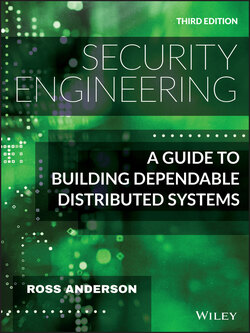Читать книгу Security Engineering - Ross Anderson - Страница 129
4.4 Manipulating the message
ОглавлениеWe've now seen a number of middleperson attacks that reflect or spoof the information used to authenticate a participant. However, there are more complex attacks where the attacker doesn't just impersonate someone, but manipulates the message content.
One example we saw already is the prepayment meter that remembers only the last ticket it saw, so it can be recharged without limit by copying in the codes from two tickets and one after another: . Another is when dishonest cabbies insert pulse generators in the cable that connects their taximeter to a sensor in their taxi's gearbox. The sensor sends pulses as the prop shaft turns, which lets the meter work out how far the taxi has gone. A pirate device can insert extra pulses, making the taxi appear to have gone further. A truck driver who wants to drive faster or further than regulations allow can use a similar device to discard some pulses, so he seems to have been driving more slowly or not at all. We'll discuss such attacks in the chapter on ‘Monitoring Systems’, in section 14.3.
As well as monitoring systems, control systems often need to be hardened against message-manipulation attacks. The Intelsat satellites used for international telephone and data traffic have mechanisms to prevent a command being accepted twice – otherwise an attacker could replay control traffic and repeatedly order the same maneuver to be carried out until the satellite ran out of fuel [1529]. We will see lots of examples of protocol attacks involving message manipulation in later chapters on specific applications.
